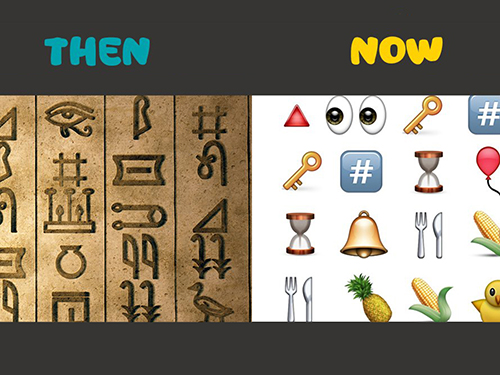
01 August 2017 – Osman Bedel –
This paper is the third in a series on social and linguistic impacts on the formation of abbreviations and acronyms in modern English. Earlier articles offered suggestions on contemporary issues in language and education, like how the introduction of ‘literature circles’ have led to the stimulation of social interaction among language learners (1); and a brief background on the history of English language and tracing the development of English (2). Subsequently, the present paper examines the driving force behind the latest trends in language production and the modernization of English language.
Even though the fundamental objective of this paper is to discover the source and the driving force behind the modernization of English language by inventing new words from old ones, it also seeks answers to questions like what led to the change that popularized modern English over traditional English; how the modern English language has evolved due to the introduction of communication across the virtual world; through what medium new abbreviations are coined and how they gain unprecedented popularity in a short span of time.
The primary data analysis shows that modern English became more popular over the traditional English as a result of increasing popularity of social media which enabled faster adoption of new terms and hence the new English, followed by a demand for rapid communication through expanding utilization of abbreviations, acronyms and emoticons frequently.
Consequently, the demand for accelerated and concise means of communication, added to the growing popularity of social media platforms as means of influence ensured the switch from traditional to a modern English language. The research on drivers of language change has determined that social norms and speaker reflexes inspire the changes happening in language, such that any changes in speaker reflexes are automatically considered as new patterns of that language, thereby suggesting that language and speakers cannot be assumed to be independent of each other (3).
When the primary data analysis was observed, different factors that have led to the development of definite internet lexicons like abbreviations, acronyms, and emoticons were determined. Predominantly, the introduction and popularity of such terms during online gaming sessions, demand for quicker and speedier forms of communication in texts and chats; and lastly, a need for introducing personal dimensions to the impersonal electronic communication messages were found to be significant drivers of coining and development of new abbreviations, acronyms, and emoticons.
Although the origins and popularity of abbreviations and acronyms, along with emoticons could be traced back text messaging times, when a need for shorter and faster means of communication existed, social media platforms further enhanced this development as a result of online gaming sessions and networking, popularity of informal language and need for expressing feelings through text messages (4, 5).
References
- Bedel, Osman, 2017. Collaborative Learning through Literature Circles in EFL. 10th International Congress on Social Sciences. Ed. Jaime Ferri Durá. Madrid: European Center for Science Education and Research.
- Bedel, Osman, 2017. History of English Language and Tracing the Development of English Language. International Journal of Humanities and Applied Sciences. Ed. Jiri Strouhal. Paris: International Journal of Humanities and Applied Sciences.
- Milroy, J. & Milroy, L., 2012. Authority in Language: Investigating Standard English, New York: Routledge.
- Práce, B., 2014. Influence of the “netspeak” on modern Internet user’s language, Olomouc.
- Prøysen, S., 2009. The Impact of Text Messaging on Standard English, Universitetet i Bergen, Department of Foreign Languages.
“The Source and The Driving Force Behind the Modernization of English Language.” The Clute Institute 2017 International Conference on Education Proceedings 452-1, 2017. ISSN 2157-9660
2017 IACB, 2017 ICE & 2017 ICTE Proceedings New York, New York © Copyright by author(s) 452-2 The Clute Institute, 2017 New York, USA






